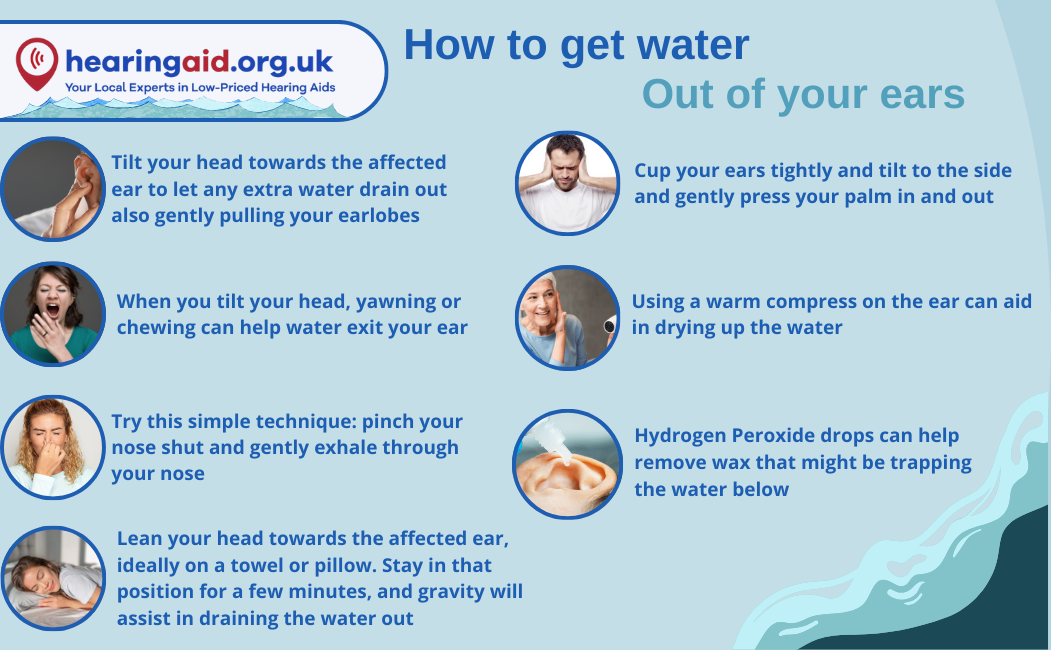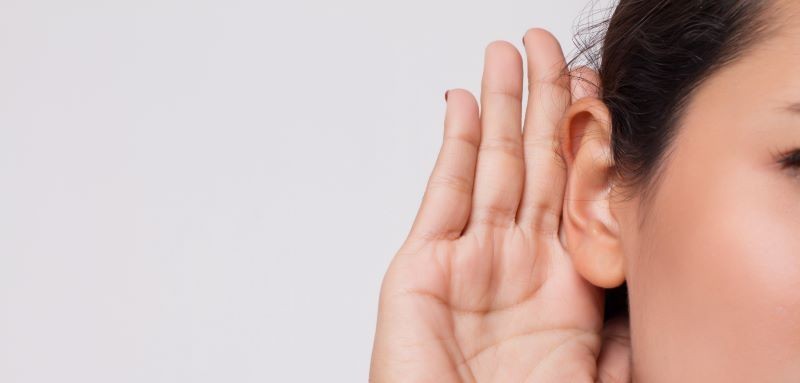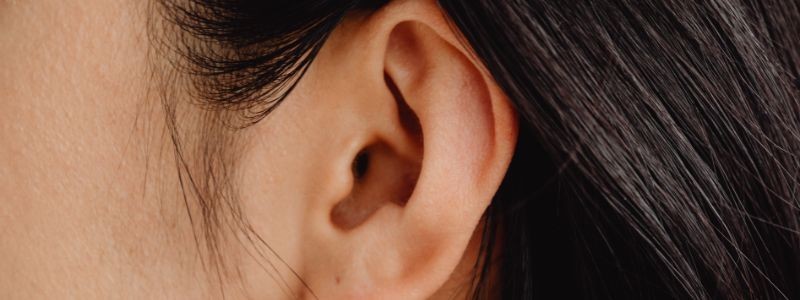Free home visits
with a local audiologist

Head of Online Medical Content

Audiology Expert at Hearing Aid UK

Introduction | Symptoms | Causes | How to get rid of water in ears | What not to do | The dangers | Prevention | Treatment | Conclusion
Water in the ears, often experienced after swimming or bathing, can cause discomfort, muffled hearing, and a feeling of fullness in the ear. If water becomes trapped in the ear canal, it can lead to conditions like swimmer's ear (otitis externa), an infection caused by bacteria or fungi growing in the moist environment.
Common symptoms include itching, pain, and ear drainage. To prevent complications, it's important to remove water by tilting the head, using gravity, or trying ear drops. Persistent water retention or infection may require medical attention to avoid hearing loss or long-term damage.
Water in the ear is a common and often underestimated issue. It can also be more than just a temporary annoyance. Whether it's from a refreshing swim, a shower or a sudden downpour - water trapped in the ear canal can lead to discomfort, temporary hearing impairment, and even potential complications if left unaddressed.
To eliminate excess water from your ears, consider employing techniques such as blow drying, using various types of ear drops or even introducing a small amount of additional water. Understanding how to deal with this common problem can help prevent unnecessary discomfort and protect your ear's health.
Water in the ear, also known as swimmer's ear or otitis externa, is usually caused by swimming. It is a common condition that occurs when water or other fluids become trapped in the ear canal. It can cause a range of symptoms, including earache, itching, and difficulty hearing.
Water in the ear is often accompanied by swelling and inflammation of the ear canal, which can make it difficult to remove the water.
It doesn't matter how old you are, swimming and playing in the water is a lot of fun - however, it can lead to water getting stuck in your ear. This can result in a fullness feeling in your ear canal and/or a feeling that you have water swishing around in your ear - similar to a trickle in your ear.
These symptoms can be in both or just one ear. In addition to these symptoms, you may feel discomfort in your jawbone or throat and your hearing might be muffled or distorted. Generally tilting your head will help the water to come out of its own accord.
If you have water stuck in your ear for days it can sometimes lead to an ear infection like otitis externa, also called swimmer's ear.
It's important to keep on top of your ear and hearing health and if you have any concerns you need to speak to your local GP. Below, we talk about what causes trapped water in the ear, how to get water out of your ear, and how to prevent water in your ear.
Why and how does water get stuck in your ear? Trapped water in the ear after swimming is due to various reasons, but the main causes are usually because something is inside your ear canal like a build-up of earwax, or you have narrow ear canals.
More people are prone to waterlogged ears and that is anyone who spends a lot of time in the water, like surfers for example. Getting water trapped in your ears can happen to anyone and anytime you go under the water.
This is especially true if there is more pressure than usual, or you are inverting. Like doing a handstand under the water.

Wondering how to remove water from the ear? If you are finding it difficult to get rid of the feeling of water in your ear the most important thing to remember is to not insert anything inside your ear canal.
If you do, you might be at risk of pushing the obstruction or water deeper into your ear canal, puncturing your eardrum, injuring your ear canal, or even taking away the protective layer of earwax that stops bad bacteria from growing.
After waiting for approximately 5 seconds, carefully roll over with the affected ear facing downward. This manoeuvre should prompt the complete drainage of the water.

Consulting a healthcare professional is the safest option for the safe removal of water or earwax from your ear. If home remedies prove ineffective, avoid the temptation to employ ear swabs, your finger, or any other objects for ear exploration. Such actions can worsen the situation by:

In some cases, the water in your ears will come out on its own, as your earwax is water-repellent. However, if it doesn't, as we've mentioned already, bad bacteria can grow and cause infections like swimmer's ear. Warm or wet conditions are the best environments for bacteria to grow.
The symptoms of swimmer's ear may vary in severity, but they may include:
Wondering how to prevent water in your ears while showering, bathing, or swimming? Wearing earplugs and/or a swimming cap while swimming can help prevent getting water in your ears, these can be found at your local pharmacy.
If you talk to your audiologist, they can recommend the best earplugs for swimming, some of them can be custom-fit to the shape of your ear canal and are often reusable and washable.
They can also advise you on other methods of how to prevent water from getting stuck in your ear in the future. After swimming, always dry your ear properly, to avoid any excess water getting into your ear, and using the hair dryer can evaporate any water inside your ear after swimming, bathing, or showering.
Water can stay in your ear for days, even months, and can be an awkward and irritating sensation. If water stays trapped in your ear after 2 or 3 days or if you show signs of infection, you must contact your local GP. If you avoid seeking medical attention, your symptoms can worsen and over time cause more long-term damage to your ears or even hearing loss.

Fluid in the ear can develop when there is a problem with your ear's drainage tubes. This results in a build-up of fluid behind the eardrum. This can be caused by various reasons and can be a symptom of other ear problems and conditions.
So, what causes fluid in the eardrum? It can be caused by something preventing the tubes (or Eustachian tubes) from draining correctly, such as:
Fluid behind the eardrum can go away on its own or be treated by your local GP. If the blockage behind your eardrum is causing pain, infection, or inflammation then you may be prescribed a course of antibiotics to help the fluid drain away and reduce the swelling and discomfort.
If this course of action is unsuccessful, then in some cases grommets (small tubes) can be placed into your ear to drain the fluid.
This is often due to trapped water in your ear, but if confirmed that it is not - it could be tinnitus. Tinnitus is a medical condition that can lead to ringing, whooshing, or swishing sounds in your ear or ears. Due to the sound coming from inside your ear, people often say that it sounds like the sea.
Tinnitus can affect you long or short-term and can be caused by:
If the tinnitus sounds persist then you should seek medical help from your GP or you may need to be referred to an audiologist for further treatment of tinnitus if there is no underlying health condition, such as an ear infection.

Usually, trapped water goes away on its own without treatment. If symptoms persist for longer than three days, the at-home treatments don't work, you're experiencing pain, or you think you might have an ear infection - contact your local GP.
Have you had a feeling of water in ear for months? Ear infections can quickly become serious if not diagnosed and treated quickly, such as hearing loss, cartilage complications, or bone damage. Your GP can prescribe you the best course of treatment for your symptoms, to relieve the pain and infection severity.
If these methods do not work, or if you are experiencing severe symptoms such as severe earache or discharge from the ear, it is important to consult with a healthcare professional. They can examine your ear and determine the best course of treatment, which may include ear drops or other medications to help remove the water and alleviate any symptoms.
It is also important to take steps to prevent water in the ear in the future. Wearing earplugs when swimming or showering can help to prevent water from entering the ear canal, and avoiding the use of cotton swabs and other foreign objects in the ear can also help to reduce the risk of water in the ear.
If you can't get water out of your ears, try tilting your head to the side, pull on your earlobe gently, and hop on one foot. Try using a blow dryer on the lowest setting or try over-the-counter ear drops. If the problem persists, consult your local GP, as we are unable to help you with this.
If you think you might have hearing loss or your hearing has worsened and need some impartial advice, please call us free, at Hearing Aid UK on 0800 567 7621 to speak with one of our audiologists.
You can also watch the short video from Healthline about water in your ears or the NHS whitepaper on ear health below.
 High-Pitched Sounds Like Birdsong Are Fading. Do I Have Hearing Loss?
High-Pitched Sounds Like Birdsong Are Fading. Do I Have Hearing Loss?  Asking people to repeat themselves frequently. Do I have hearing loss?
Asking people to repeat themselves frequently. Do I have hearing loss?  When do I need a hearing aid? What level of hearing loss would benefit from hearing aids?
When do I need a hearing aid? What level of hearing loss would benefit from hearing aids? Do not spend hundreds of pounds without getting a second opinion from us.
 Not only are the prices great, but the service is fantastic! Many thanks to your team.
Not only are the prices great, but the service is fantastic! Many thanks to your team.Normally, gravity aids in the natural drainage of water from the ears. However, when this process seems ineffective, certain home remedies such as using eardrops and gently manipulating the earlobe may assist in facilitating the removal of trapped water.
When water remains trapped in your ear, it's possible that earwax or debris is obstructing its exit. In such cases, refrain from inserting any objects into your ear, as this could lead to potential infections. Consider using sterile eardrops to gently soften the earwax.
If you suspect an ear infection, possibly swimmer's ear, it's advisable to seek medical attention for proper diagnosis and treatment by a healthcare professional.
When water lingers in your ear, there's an increased risk of developing an ear infection, particularly if the water carries bacteria. This condition, known as swimmer's ear, often necessitates medical intervention and treatment by a healthcare professional.
When your ear feels blocked, whether from water or pressure, you can often safely relieve the discomfort by inducing the opening of your eustachian tubes through actions like yawning, swallowing, or employing a warm compress. If these self-help measures prove ineffective, seeking assistance from a medical professional may be a prudent course of action.
When we refer to a product as 'Latest Launch', we mean it is the latest to be released on the market.
When we refer to a product as 'New', we mean that the product is the newest hearing aid model on the market.
When we refer to a product as 'Superseded', we mean that there is a newer range available which replaces and improves on this product.
When we refer to a product as an 'Older Model', we mean that it is has been superseded by at least two more recent hearing aid ranges.